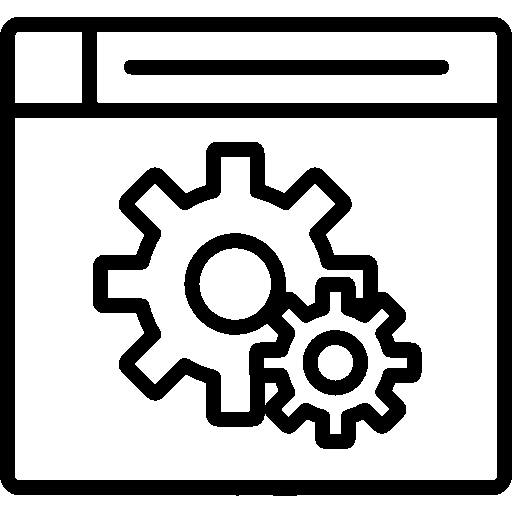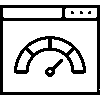- Products
- Platform
- Solutions
- Customers
- Support
- Pricing
 Website & Mobile & E-commerce
Website & Mobile & E-commerce
 CRM
CRM
 Operation & ERP
Operation & ERP
 Productivity
Productivity
 Support
Support
 Community
Community
 Learn
Learn
Application Support Point

You can manage the management of all your physical and virtual POS through the POS application. You can track the payments of your virtual POS you use in your e-commerce sites through this application. You can follow the realized and non-executed POS transactions from this application.
- Version History
- Application Features
- User Manual
- FAQ
- Community
Definition
POS (Point of Sale) application is a software used by businesses to process sales transactions, receive payments, and record sales data. A POS system operates via a terminal or device used during the sale of products or services, usually in retail and service sectors such as stores or restaurants. This application offers various features to manage cash register transactions, inventory management, and customer relations.
Aim
The purpose of POS application is to speed up and facilitate sales transactions, make the payment process secure and efficient, and optimize the financial transactions and inventory management of businesses. It also helps businesses maximize their sales and revenues by increasing customer satisfaction.
Key Benefits
- By ensuring that sales transactions are completed quickly and accurately, it reduces customer waiting times and increases transaction efficiency.
- It offers secure and diverse payment options by supporting various payment methods such as credit cards, debit cards and digital wallets.
- By offering inventory management integrated with sales transactions, it ensures automatic updating of stocks and facilitates stock tracking.
- Sales data helps business owners track performance and make financial decisions by providing detailed reports on daily income and expenses.
- It allows for the development of personalized customer service and marketing strategies by tracking purchase history and customer information.
- By offering a user-friendly interface, it enables employees to easily learn and use the POS system, reducing training time and cost.
- It provides solutions suitable for various business models by offering settings and features that can be customized according to the needs of the business.
- For businesses with multiple branches, it allows all sales and inventory data to be collected and managed in a central system.
- Thanks to automation and integrated systems, it reduces manual operations, increases operational efficiency and reduces error rates.
- It provides the opportunity to attract customers and increase sales by easily managing sales strategies such as discounts, promotions and campaigns.
Entrance
It is the login screen of the POS application.

POS Accounts
This is the screen where POS calculations are displayed.

On the POS applications screen, Bank Name , Last Transaction, Number of Accounts, Balance and Grand Total information are listed in a table.
Branch Accounts
This is the screen where branch accounts are displayed.

Bank Name on the Branch Accounts screen, Final Process, Number of Accounts, Balance and Grand Total information are listed in a table.
Virtual POS Transactions
Virtual POS Transactions are divided into three groups: Transactions Realized, Transactions Not Realized, and Transactions Cancelled.
Transactions Performed

On the Transactions Performed screen, Customer Name , Bank Name, Transaction Amount , Installment Status, Error Code, Error Message, Transaction Code, Transaction Time information is listed in a table. You can access transaction details by clicking on the transaction.

The Transaction Details screen includes General Information, 3D Verification, Transaction Result, 3D Outgoing Data, 3D Incoming Response, Payment Outgoing Data, Payment Incoming Response information.
Unfulfilled Transactions

On the Unrealized Transactions screen, Customer Name , Bank Name, Transaction Amount , Installment Status, Error Code, Error Message, Transaction Code, Processing Time, Checked information is listed in a table.
Cancelled Transactions

On the Canceled Transactions screen, Customer Name , Bank Name, Transaction Amount , Installment Status, Error Code, Error Message, Transaction Code, Processing Time information is listed in a table.
Registered Cards
This is the screen where the registered cards are displayed.

On the Saved Cards screen, the Customer, Account name, Card No / Card Owner, User Token , Card Token, Date information is listed in a table. A card is added by pressing the Add New button.

To add a card, add Credit Card Information.
Settings
The settings document can be accessed via the relevant menu.
Please click for related content.
General Settings
Settings are customized by selecting the settings to be used according to the company's preference from the General Settings menu.

The color of the application is saved by selecting the preferred color.
The Default Calendar Filter is selected.
POSs can be defined separately for branches.
-Branches can use central POS
A credit/debit record is created.
POS accounts can be authorized according to users.
Installments can be determined according to the card group in the BIN numbers.
Other Cards can be selected.
POS Definitions
This is the screen where POS definitions are displayed.

The POS Definitions screen includes Accounting Code and Currency information. By pressing the Add New button , multiple POS can be created depending on the banks.
BIN Settings
BIN Settings are divided into four categories: Card Group Definitions, Card Types, Card Types, BIN Definitions.
Card Group Definitions

On the Card Groups screen, Order, Title, Code , Active information is listed in a table. Card Group Definition is added by pressing the Add New button.

To add a Card Group Definition, enter the Code, Title, Status, and Description information.
Card Types

On the Card Types screen, Order, Title, Code information is listed in a table. Card Type is added by pressing the Add New button.

To add a Card Type , Code, Title, and Sort information is entered.
Card Types

On the Card Types screen, Order, Title, Code information is listed in a table. Card Type is added by pressing the Add New button.

To add a Card Type , Code, Title, and Sort information is entered.
BIN Definitions

On the BIN Definitions screen, Order, BIN Code Start, BIN Code End, Bank Information, Card Brand, Card Group, Card Type, Card Type , Active information is listed in a table. BIN Definition is added by pressing the Add New button.

To add a BIN definition, enter the BIN Code Start, BIN Code End, Bank, Card Brand, Card Group, Card Type, Card Types, Status, and Description information.
Credit Card Installment Settings
Credit Card Installment Settings are divided into two groups: Card Groups and All Installment Options.
Card Groups

On the Card Groups screen, Order, Card Group, Single Shot POS, Includes POS installment information.
All Installment Options

Installment options for all banks are displayed.
Authorized Users
Having certain authorities in the company is an important element that increases organizational efficiency and workflow. Authorization ensures a clear distribution of tasks and responsibilities.

On the Authorized Users screen, users are given the required authorizations and saved.
Filtering Settings
Filtreleme ayarları, bir sistemde veya uygulamada belirli kriterlere göre verileri sınıflandırmak için kullanılır. Bu ayarlar, kullanıcıya yalnızca ilgili veya uygun içerikleri sunmaya yardımcı olur.

Filtreleme ayarları ekranında Tarih Aralığı, Tutar, Pos, Taksit Durumu alanları seçilerek filtreleme yapılır.
Questions
Ask questions and get answers from other Entranet users.

















